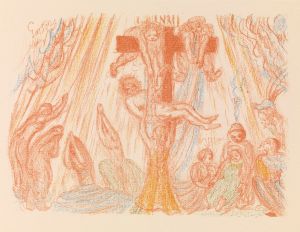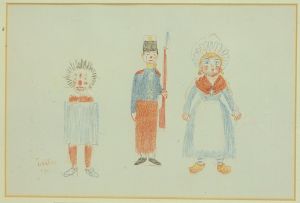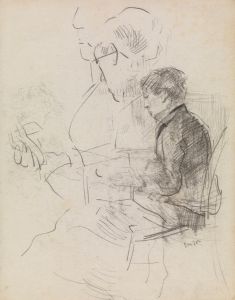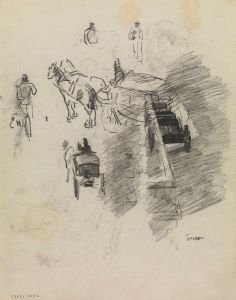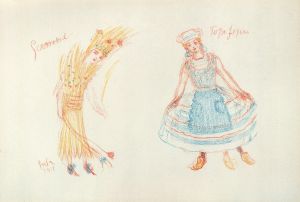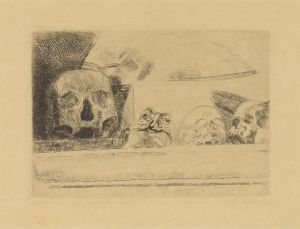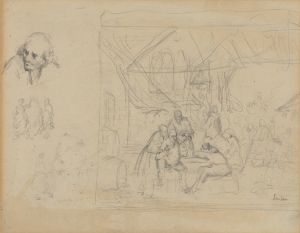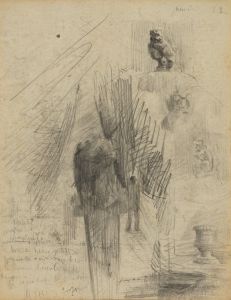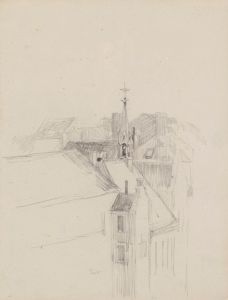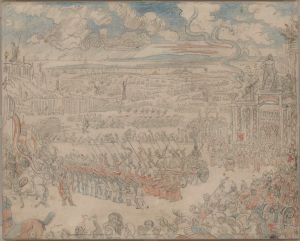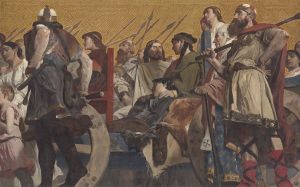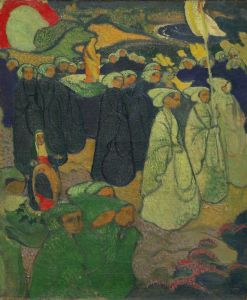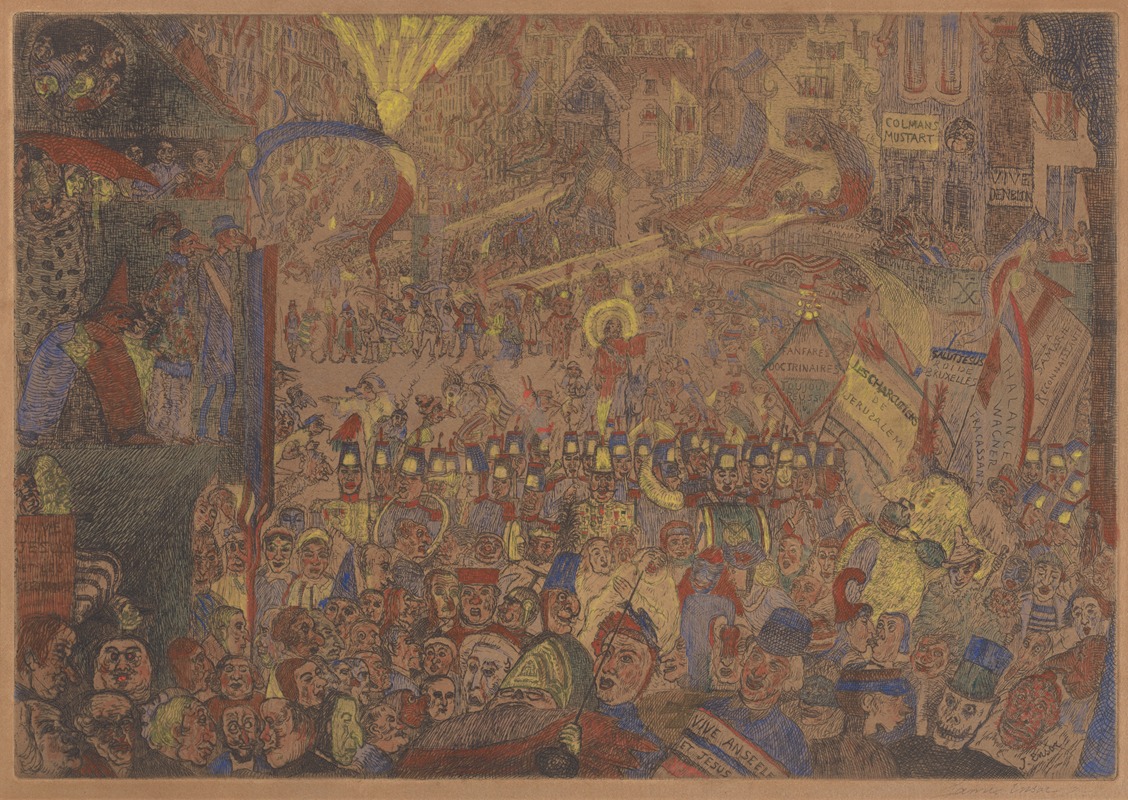
De intocht van Christus te Brussel
A hand-painted replica of James Ensor’s masterpiece De intocht van Christus te Brussel, meticulously crafted by professional artists to capture the true essence of the original. Each piece is created with museum-quality canvas and rare mineral pigments, carefully painted by experienced artists with delicate brushstrokes and rich, layered colors to perfectly recreate the texture of the original artwork. Unlike machine-printed reproductions, this hand-painted version brings the painting to life, infused with the artist’s emotions and skill in every stroke. Whether for personal collection or home decoration, it instantly elevates the artistic atmosphere of any space.
"De intocht van Christus te Brussel" (The Entry of Christ into Brussels) is a monumental painting by the Belgian artist James Ensor, completed in 1888. This work is considered one of Ensor's masterpieces and a pivotal piece in the transition from 19th-century realism to 20th-century expressionism and surrealism. The painting is notable for its large scale, measuring approximately 252 cm by 431 cm, and its complex, crowded composition.
James Ensor was born in 1860 in Ostend, Belgium, and he spent most of his life there. He was a prominent figure in the Belgian avant-garde movement and a member of the group Les XX, which was a collective of artists who sought to challenge the traditional norms of art during the late 19th century. Ensor's work often featured satirical and grotesque elements, reflecting his critical view of society and the human condition.
"The Entry of Christ into Brussels" depicts a chaotic and satirical scene of Christ's second coming, set not in Jerusalem but in contemporary Brussels. The painting is filled with a bustling crowd of masked figures, soldiers, clergymen, and politicians, all seemingly oblivious to the significance of Christ's arrival. The composition is dense and overwhelming, with a vibrant use of color and exaggerated forms that convey a sense of disorder and absurdity.
Ensor's choice to place Christ in a modern setting serves as a critique of contemporary society, highlighting the superficiality, hypocrisy, and moral decay he perceived in the world around him. The masks worn by many of the figures in the painting are a recurring motif in Ensor's work, symbolizing the duplicity and hidden nature of human behavior.
The painting was initially met with controversy and was not well-received by the public or critics at the time of its creation. Its unconventional style and provocative subject matter challenged the artistic norms of the period. However, over time, "The Entry of Christ into Brussels" has come to be recognized as a significant work in the history of modern art, influencing later movements such as expressionism and surrealism.
Today, the painting is housed in the J. Paul Getty Museum in Los Angeles, California. It remains a powerful example of Ensor's unique vision and his ability to blend social commentary with innovative artistic techniques. The work continues to be studied and admired for its bold composition, vibrant color palette, and its insightful critique of society.
Ensor's legacy as an artist is marked by his ability to confront the viewer with the complexities and contradictions of the human experience, and "The Entry of Christ into Brussels" stands as a testament to his skill and foresight as a painter.







